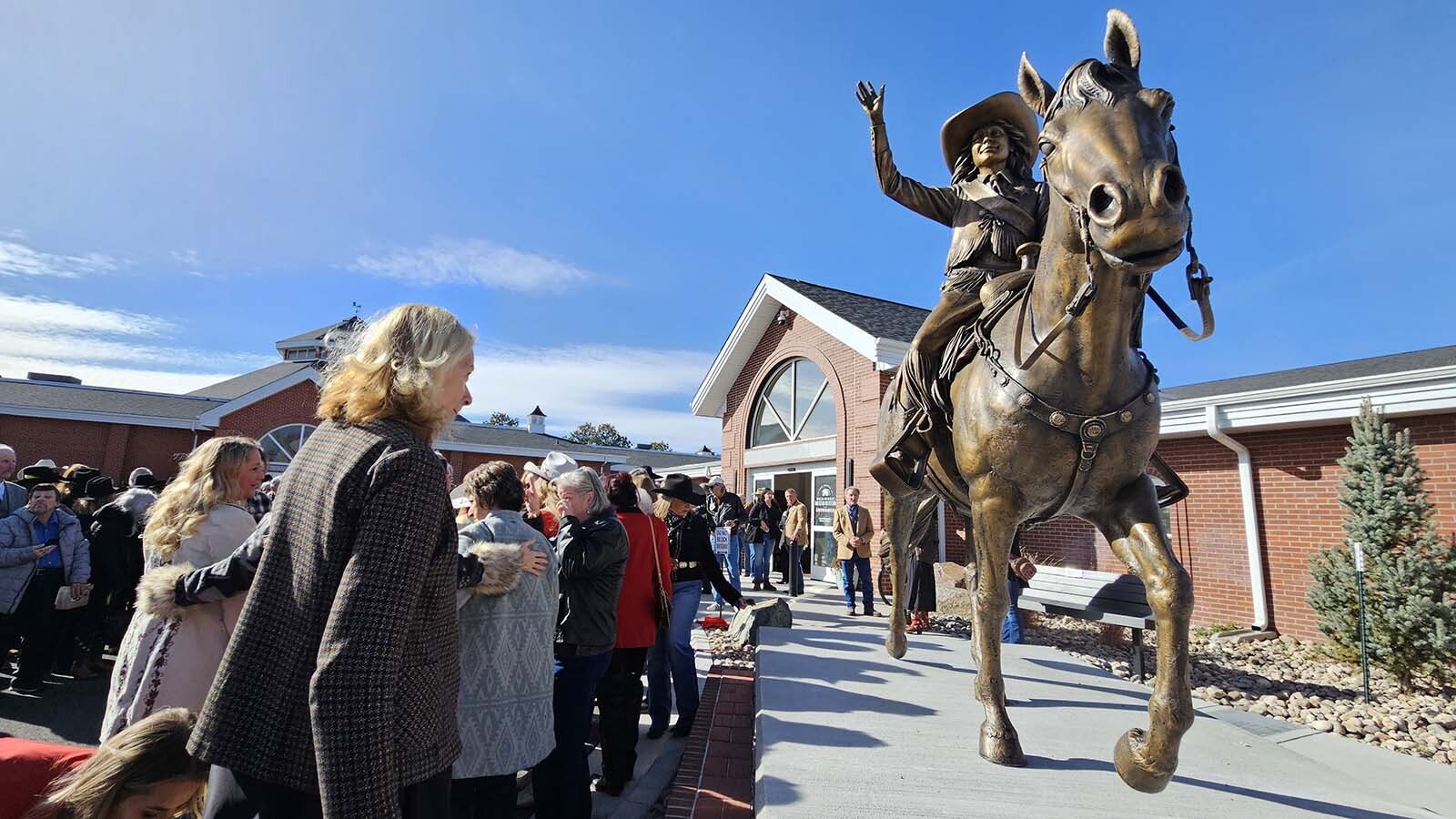Anyone watching the Wyoming Department of Transportation’s webcams along Interstate 80 near Sinclair onMonday evening might have noticed something unusual, or even disturbing. It could have been a strangely beautiful inferno or an extradimensional portal to hell, depending on your perspective.
Nevertheless, a series of three cameras displayed ribbons of dazzling color amid a foggy haze that left many bemused and others wondering if they just witnessed the climatic final battle of an “Avengers” moving playing out along the interstate. One camera in particular looked like an explosion of fire, as if a door to Hades had been opened.
But it wasn’t Ghost Rider, a plutonium-enhanced DeLorean, or the corporeal manifestation of Sauron, the evil antagonist from “The Lord of the Rings.” The actual explanation for the phenomenon is less colorful — orinteresting.
“That’s ice,” said Cowboy State Daily meteorologist Don Day.
Snow And Spray
The WYDOT webcams that captured the colorful cacophony were placed alongside I-80, where U.S. Highways287 and U.S. 30 converge. At least one view overlooks the Sinclair refinery, which generated the icy blue streaks that Elsa from Disney’s “Frozen” would be proud to say she let go across the highway.
The other colors came from passing traffic, whose taillights and headlights were refracted through the ice encasing the camera. By examining the images, Day could even determine the source of the ice.
“It was wet snow hitting the camera case and freezing, and possibly spray from the wet road getting thrown onto the camera,” he said. “That’s what created that particular layer of ice.”
The lights were too late for Christmas but generated quite a buzz on the popular Wyoming Road and Weather Conditions Reports Updates Facebook group.
By Tuesday morning, the ice had melted, revealing crystal-clear images of I-80 and the Sinclair refinery.
When Webcams Work
WYDOT’s webcams are a valuable resource, especially during the winter months when conditions can quickly become hazardous. However, they can also be hampered by weather and other damage sustained in Wyoming's harsh conditions.
“We have technicians around the state who regularly take care of those cameras and ensure they're operating,” said WYDOT spokesperson Jordan Young. “That includes clearing them of debris, whether that's dust or snow, if they're angled wrong or shifted from the wind to look up at the sky or down away from the road where they're not helpful for drivers.”
Young said WYDOT strategically places its webcams in “the historically bad places for weather and snow.”
Even with a team of technicians tending to the cameras during the worst of winter, freeing them from layers of encasing ice and snow can take a while.
“Sometimes the ice melts itself, and other times we have to send a team out to fix it,” she said. “It depends on the camera angle, how much sun each area gets, nearby topography and things like that. Our technicians are kept very busy keeping the cameras operating and working properly.”
Earlier this year, WYDOT announced it was replacing 61 inoperable or outdated cameras across Wyoming, 27% of the 222 webcams installed alongside the state’s major thoroughfares, for a cost of $6.6 million.
Young said that process is still underway, and the new cameras are “amazingly powerful” compared to the old ones. In addition to being powered by solar panels, the cameras can connect to the existing network via cellphone service, fiber optics or satellite.
“We’re trying to make our webcams as reliable as possible,” she said.
Road Redundancies
WYDOT knows its 222 webcams are essential to hundreds of thousands of drivers traveling through the Cowboy State. The department relies on them just as much as the traveling public.
“Even our employees will check them and look at what’s going on before traveling,” Young said. “We know how much folks use them.”
Nevertheless, Young discouraged anyone from solely relying on webcams to make informed decisions about their Wyoming commutes. While webcams provide real-time information about several problematic areas, they are just one of the many tools WYDOT provides.
“The webcams show a snapshot of each location, but Wyoming’s weather can change a lot in just a matter of miles. We can't have a webcam everywhere,” she said.
Where there isn’t webcam coverage, Young hopes Wyomingites will use WYDOT’s 511 app and the Wyoming Travel Information Map. Both platforms update road conditions in real-time, including information collected from the webcam network.
The ice covering the webcams near Sinclair melted relatively quickly, but it still takes time and effort to clear every WYDOT webcam that could get covered in ice and snow this winter. Young encourages everyone to make the most of WYDOT’s extensive road coverage services.
“Webcams are a great tool, but I wouldn’t recommend people use it as the only tool when we have so many others available,” she said. “We hope drivers understand that there can still be conditions outside of camera view that warrant slowing down and paying extra attention.”
In the meantime, if it’s icy enough to make the cameras show possible portals to hell are opening up, that might be a sign it’s also too icy to safely drive on.
Andrew Rossi can be reached at arossi@cowboystatedaily.com.










